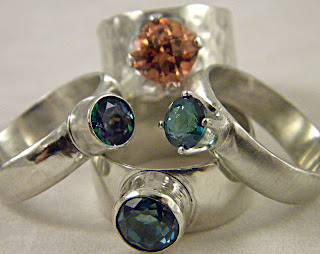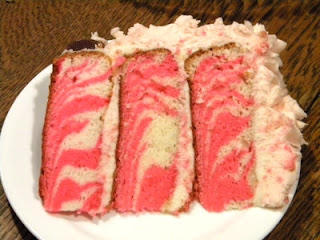This post is dedicated to my husband. This is ridiculous for two reasons - first, it's a blog post. Second, I'm fairly certain he has never read a single post on my blog and if asked, can't even tell anyone the URL. But had he not supported this effort and helped me with all of the heavy moving and lifting, I'm not sure this project would have ever gotten off the ground.
Ok, so this probably isn't every jeweler's dilemma. But certainly mine (I feel weird referring to myself as a jeweler, but apparently I am; Wikipedia says so). I've been making jewelry for over a decade and have been aware the entire time that I needed to do something about the ventilation in my workspace. I did a ton of research and had several false starts toward doing something to take care of the issue, but every time I thought I was really going to do something about it this time, dammit, I would hit a wall.
There is an odd thing that happens around other jewelers when ventilation comes up. People in the forums and social networks who are extremely supportive and fun and happy morph into scary, lecturing safety experts if there is so much as a hint that mayyyyyybe there isn't adequate ventilation. Yes, it's important. But people get strangely angry and self righteous about what other bench jewelers should be doing and think nothing of making sure you know that if you don't have a full hood and fan system you are a horrible person. Don't get me wrong, there are certainly people who are very willing to help - I found most of my information about what could make things better (having an adequate intake (uptake?) air source was definitely something I didn't have in my set up) in one of the Lampwork, etc forums - but the negative side can be overwhelming.
So I ran fans and wore a respirator mask with my safety glasses every time I worked at the bench to try to keep my exposure limited and wrestled with whether or not I could really afford to do something more formal. The respirator is bulky and in the summer gets disgustingly sweaty, but I can sing at the top of my lungs without anyone really hearing how terrible my voice is. (Watch out - I had just finished a cardio workout and there is no makeup whatsoever involved in this picture.)
I called a local HVAC company that quoted me a price of $3,000. I seriously considered cutting the holes myself and piecing together my own hood and ducting system but there are all sorts of things that have to be right - the fan CFM and the angles in the ducting (whatever you do, don't use corrugated ducting because it reduces air flow)...it was a lot to try to figure out and then get shipped in and install, let alone pay for. Especially since this isn't my day job - it's hard to justify spending so much on what is really more of a hobby than what actually helps to support my family.
I finally decided that I was over complicating the whole thing and that I needed to start somewhere and make some sort of improvement to my workspace. Shifting the focus to progress rather than perfection lifted the burden and in the end, some adjustments would be better than none.
Those adjustments started with an industrial fan that would pull the air through the workspace. No ducting or hood for now; just start with the fan. I ordered this fan and this hood. It sits flush against the outside wall with shutters that open when the fan is on and close when off. The hood may not have really been necessary, but it seemed like a good idea to help keep the weather out.
Those adjustments started with an industrial fan that would pull the air through the workspace. No ducting or hood for now; just start with the fan. I ordered this fan and this hood. It sits flush against the outside wall with shutters that open when the fan is on and close when off. The hood may not have really been necessary, but it seemed like a good idea to help keep the weather out.
We had a local contractor come out and cut the opening and do the installation. After literally years of contemplation and worries about how much it would cost, the whole thing was installed and ready to go for less than $300.
This isn't complete - just an important first step. I'm hoping that from here, adding on won't seem like such a daunting task.
This isn't complete - just an important first step. I'm hoping that from here, adding on won't seem like such a daunting task.
The catch was that we had to move my whole set up to the other garage so we could avoid things like the fuse box and major electrical issues. So this weekend we cleaned it out and moved it all. When the fan is on the highest speed, it pulls my torch flame a bit so I will probably stick to the medium speed most of the time for soldering.
It's not perfect. It won't stand up to critiques by the people who are so negative in the forums about what must be done. But the strength of the fan and the fact that my intake air source is huge with the garage door left partly open is a giant improvement from the previous set up. I stand behind the workstation and can see the flame pulling toward the fan and feel the air pulling in from behind me and up. It feels similar to working outside with a breeze which is also nice for a hot summer day. I'm not so sure how that will feel when it's 12 degrees outside, but I'll worry about that in a few months.
It's not perfect. It won't stand up to critiques by the people who are so negative in the forums about what must be done. But the strength of the fan and the fact that my intake air source is huge with the garage door left partly open is a giant improvement from the previous set up. I stand behind the workstation and can see the flame pulling toward the fan and feel the air pulling in from behind me and up. It feels similar to working outside with a breeze which is also nice for a hot summer day. I'm not so sure how that will feel when it's 12 degrees outside, but I'll worry about that in a few months.
Update: Spring 2014
I'm still chipping away at the setup to make better use of the exhaust. I moved everything so that my torch work is about two feet below the fan. I don't like it as well as I did when the workbench was on the other wall but I know it's better for ventilation and I've gotten used to it. I need to add the hood to better draw the fumes; hopefully before the end of the summer.
Update: Summer 2015
I finally added the hood above my workbench. Ideally I think I need to add some flared metal to the bottom of the hood to help funnel the air, but for now I'm happy with the progress. The bottom of the hood is about two feet from the surface area I use for soldering (I have a tripod setup, not shown here because I removed it so I could step on the table to install the hood) and I can feel a marked difference in the air flow. Occasionally I have to turn the fan down because I'm trying to solder a larger piece and can't keep enough heat on it from the torch.
Whether I add a bit more or not, I'm really glad that I treated this as a long term project rather than trying to get it installed in one step.




















